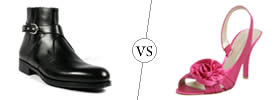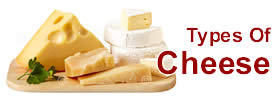Difference between Red and White wine
Key difference: White wines are made from green, gold or yellowish colored grapes or juice of select dark grapes. Red wines are made from dark grapes.
 The word ‘wine’ comes from the Latin vinum, which stands for "wine" or "(grape) vine". Wine has been around for millennia. The earliest record we have of wine production, made by fermenting grapes, dates back to sixth millennium BC. These different sites date from 6000 BC in Georgia, 5000 BC in Iran, and 4100 BC in Armenia. Currently, there are various different types of modern wine from France, Italy, Spain, the US, etc. For all purposes, most people categorize wine into two types, red and white.
The word ‘wine’ comes from the Latin vinum, which stands for "wine" or "(grape) vine". Wine has been around for millennia. The earliest record we have of wine production, made by fermenting grapes, dates back to sixth millennium BC. These different sites date from 6000 BC in Georgia, 5000 BC in Iran, and 4100 BC in Armenia. Currently, there are various different types of modern wine from France, Italy, Spain, the US, etc. For all purposes, most people categorize wine into two types, red and white.
Red wine is made from black grapes, while white wine is made from white grapes or the juice of black grapes. Grapes are rarely black or white, rather white grapes refer to lighter-skinned grapes that can be green, yellow-green, gold or light-orange. Blank grapes refer to grapes with a red or blue tint, and range from light ruby to a deep indigo.
The process of production differs little in the case of red or white wine. Grapes are crushed into a machine, fermented and then stored for a period of time. White wines contain little or no red pigmentation. This is mainly because it is made from white grapes. Some white wines, such as Champagnes, are also made from black grapes. However, they use only the juice of the grapes, discarding the pigmented skin and pulp. White wines are known to have a sweet or dry taste, or somewhere in between.
 Red wines are made from black grapes. They have a distinct red color, since they used the whole grape, including the grape skins. The skin has all the grapes’ pigmentation, this is what gives a grape and hence the wine, its color. The skins are kept in the wine throughout the fermentation process, which is how the red wine absorbs the color.
Red wines are made from black grapes. They have a distinct red color, since they used the whole grape, including the grape skins. The skin has all the grapes’ pigmentation, this is what gives a grape and hence the wine, its color. The skins are kept in the wine throughout the fermentation process, which is how the red wine absorbs the color.
Another difference between red and white wines is tannins. Tannins are found in the grape skins, and are transferred into the wine from the skins. They are mainly found in red wines, and are the reason for a dry, puckering sensation in the mouth and in the back of the throat, while drinking the wine. They also help preserve wine and allow red wines to be aged longer than white wines. Also, red wines are much more delicate once exposed to oxygen. They need to breathe. They should be opened and allowed to sit so that some of the alcohol may evaporate and allow the wine to balance out. This will allow more of the flavor and texture to come out, making the wine more enjoyable, but if kept out too long the wine will start to oxidize and become harsh and bitter.
There are also certain differences in what kind of foods the red and white wines should be paired with, as well as in the manner of serving temperature and storage. These differences are listed below:
|
|
Red Wine |
White Wine |
|
Ingredients |
Whole dark grapes |
Whole light colored grapes or juice of dark grapes |
|
Taste |
Red wines have a rich flavor. Are more aromatic and fragrant. |
White wines have a light, crisp, fruity flavor and aroma. |
|
Advantages |
Powerful antioxidants which may help prevent heart disease by raising good cholesterol levels and protecting the arteries from damage. |
Contain less reservatrol, a powerful antioxidant, which reduces bad cholesterol and blood clots. |
|
Calories |
74 calories for a 3 to 5 ounce glass of red wine |
70 calories for a 3 to 5 ounce glass of white wine |
|
Serving temperature |
Room temperature, 62-67 deg Fahrenheit |
Chilled, 38-44 deg Fahrenheit |
|
Foods to pair with |
beef, pork, chocolate |
fish, poultry, pork |
|
Airing |
Red wines need to breathe, so they need to be opened and allowed to sit. |
Whites are usually ready to drink right after opening |
|
Storage |
Store at room temperature. Using a vacuum pump one can store a bottle of red wine for 4-5 days. |
Whites need to remain chilled after opening, and may remain fresh and drinkable for over a week. |
|
Common types |
Beaujolais, Cabernet Sauvignon, Chianti, Merlot, Pinot Noir and Zinfandel. |
Riesling, Semillon, Sauvignon Blanc, Pinot Gris, Moselle and Champagne. |
Image Courtesy: cookinglight.com, myorganicrecipes.com









Add new comment